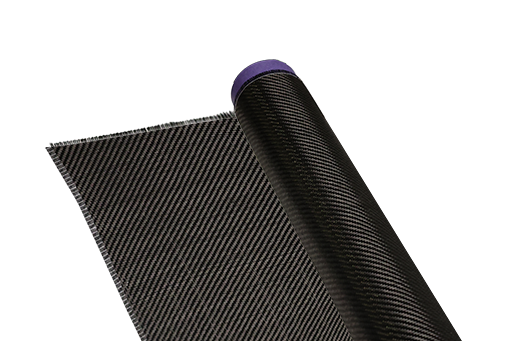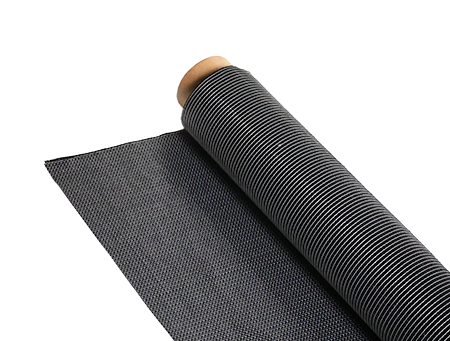Resins Go Green: Bio-Based Epoxies Gaining Popularity
-
Table of Contents
“Resins Go Green: Embrace the Future with Eco-Friendly Bio-Based Epoxies!”
Resins Go Green: Bio-Based Epoxies Gaining Popularity highlights the growing trend towards sustainable materials in the resin industry. As environmental concerns rise, bio-based epoxies, derived from renewable resources, are emerging as eco-friendly alternatives to traditional petroleum-based resins. These innovative materials not only reduce carbon footprints but also offer comparable performance characteristics, making them increasingly attractive for various applications in construction, automotive, and consumer goods. The shift towards bio-based epoxies reflects a broader commitment to sustainability and responsible manufacturing practices, positioning them as a key player in the future of material science.
Bio-Based Epoxies: The Future of Sustainable Resins
As the world increasingly prioritizes sustainability, the demand for eco-friendly materials has surged, leading to significant advancements in the field of resins. Among these innovations, bio-based epoxies have emerged as a promising alternative to traditional petroleum-based resins. These bio-based epoxies, derived from renewable resources such as plant oils and natural fibers, are gaining traction across various industries, including construction, automotive, and consumer goods. Their rise in popularity is not merely a trend; it represents a fundamental shift towards more sustainable manufacturing practices.
One of the primary advantages of bio-based epoxies is their reduced environmental impact. Traditional epoxy resins are often synthesized from fossil fuels, contributing to greenhouse gas emissions and depleting non-renewable resources. In contrast, bio-based epoxies utilize renewable feedstocks, which can significantly lower the carbon footprint associated with their production. By harnessing the power of nature, manufacturers can create resins that not only perform well but also align with global sustainability goals. This transition is particularly crucial as industries face increasing pressure to adopt greener practices and reduce their reliance on fossil fuels.
Moreover, bio-based epoxies offer comparable performance characteristics to their conventional counterparts. They exhibit excellent mechanical properties, chemical resistance, and thermal stability, making them suitable for a wide range of applications. For instance, in the automotive sector, bio-based epoxies can be used in composite materials for lightweight components, contributing to improved fuel efficiency and reduced emissions. Similarly, in the construction industry, these resins can be employed in adhesives and coatings, providing durability while minimizing environmental harm. As research and development continue to advance, the performance of bio-based epoxies is expected to improve further, solidifying their position as a viable alternative.
In addition to their environmental benefits and performance capabilities, bio-based epoxies also present economic opportunities. The growing market for sustainable materials has prompted investments in the development of bio-based resin technologies. Companies that embrace these innovations can not only enhance their brand image but also tap into a burgeoning consumer base that prioritizes sustainability. As awareness of environmental issues increases, consumers are more likely to choose products made from renewable resources, driving demand for bio-based epoxies. This shift not only benefits manufacturers but also encourages a broader transition towards sustainable practices across various sectors.
Furthermore, the regulatory landscape is evolving to support the adoption of bio-based materials. Governments and organizations worldwide are implementing policies and incentives aimed at promoting sustainable manufacturing. These initiatives often include funding for research and development, tax breaks for companies that invest in green technologies, and stricter regulations on the use of harmful substances. As a result, the market for bio-based epoxies is likely to expand, driven by both consumer demand and regulatory support.
In conclusion, bio-based epoxies represent a significant advancement in the quest for sustainable resins. Their ability to reduce environmental impact while maintaining high performance makes them an attractive option for various industries. As the demand for eco-friendly materials continues to grow, bio-based epoxies are poised to play a crucial role in shaping the future of sustainable manufacturing. By embracing these innovative materials, industries can contribute to a greener planet while meeting the needs of an increasingly environmentally conscious consumer base. The transition to bio-based epoxies is not just a step towards sustainability; it is a leap into a future where economic growth and environmental stewardship go hand in hand.
Environmental Benefits of Switching to Bio-Based Epoxies

The increasing awareness of environmental issues has prompted industries to seek sustainable alternatives to traditional materials, and bio-based epoxies have emerged as a promising solution. These innovative resins, derived from renewable resources, offer a range of environmental benefits that make them an attractive option for manufacturers and consumers alike. One of the most significant advantages of bio-based epoxies is their reduced reliance on fossil fuels. Traditional epoxies are typically synthesized from petroleum-based chemicals, which contribute to greenhouse gas emissions and deplete non-renewable resources. In contrast, bio-based epoxies utilize plant-derived materials, such as vegetable oils and natural sugars, which not only minimize the carbon footprint associated with their production but also promote the use of renewable resources.
Moreover, the production of bio-based epoxies often results in lower emissions of volatile organic compounds (VOCs). VOCs are harmful pollutants that can contribute to air quality issues and pose health risks to humans. By switching to bio-based formulations, manufacturers can significantly reduce the release of these harmful substances into the atmosphere. This transition not only benefits the environment but also enhances workplace safety and improves indoor air quality, making bio-based epoxies a healthier choice for both workers and consumers.
In addition to their lower environmental impact during production, bio-based epoxies also offer advantages in terms of end-of-life disposal. Traditional epoxies can be challenging to recycle and often end up in landfills, where they can take years to decompose. Conversely, many bio-based epoxies are designed to be more biodegradable or compostable, allowing them to break down more easily in natural environments. This characteristic not only reduces waste but also contributes to a circular economy, where materials are reused and repurposed rather than discarded. As industries increasingly prioritize sustainability, the ability to dispose of materials responsibly becomes a crucial factor in material selection.
Furthermore, the use of bio-based epoxies can enhance the overall sustainability profile of products. For instance, in the construction and automotive industries, where durability and performance are paramount, bio-based epoxies can provide comparable or even superior properties to their petroleum-based counterparts. This means that manufacturers can produce high-quality products while simultaneously reducing their environmental impact. As a result, companies that adopt bio-based epoxies can improve their market competitiveness by appealing to environmentally conscious consumers who are increasingly seeking sustainable options.
Transitioning to bio-based epoxies also aligns with global initiatives aimed at reducing carbon emissions and promoting sustainable practices. Governments and organizations worldwide are implementing regulations and incentives to encourage the adoption of greener materials. By embracing bio-based epoxies, companies not only comply with these regulations but also position themselves as leaders in sustainability, enhancing their brand reputation and fostering customer loyalty.
In conclusion, the environmental benefits of switching to bio-based epoxies are manifold. From reducing reliance on fossil fuels and lowering VOC emissions to promoting responsible disposal and enhancing product sustainability, these innovative materials represent a significant step forward in the quest for greener alternatives. As industries continue to evolve and prioritize sustainability, the adoption of bio-based epoxies is likely to gain momentum, paving the way for a more environmentally friendly future. By making this transition, manufacturers can contribute to a healthier planet while meeting the growing demand for sustainable products.
Innovations in Bio-Based Epoxy Formulations and Applications
In recent years, the demand for sustainable materials has surged, prompting significant innovations in the field of bio-based epoxies. These eco-friendly alternatives to traditional petroleum-based resins are gaining traction across various industries, driven by a growing awareness of environmental issues and the need for sustainable practices. As manufacturers and consumers alike seek greener solutions, the development of bio-based epoxy formulations has become a focal point of research and innovation.
One of the most notable advancements in bio-based epoxies is the incorporation of renewable resources into their formulations. Traditionally, epoxies have relied heavily on fossil fuels, but recent innovations have introduced plant-derived materials, such as vegetable oils and lignin, as key components. These bio-based feedstocks not only reduce reliance on non-renewable resources but also contribute to lower carbon footprints. For instance, the use of epoxidized soybean oil has emerged as a popular choice, offering comparable performance to conventional epoxies while enhancing sustainability.
Moreover, the versatility of bio-based epoxies has expanded their applications across various sectors, including automotive, construction, and electronics. In the automotive industry, manufacturers are increasingly utilizing bio-based epoxies for composite materials, which are essential for lightweight structures that improve fuel efficiency. These resins not only meet stringent performance standards but also align with the industry’s shift towards greener manufacturing processes. Similarly, in the construction sector, bio-based epoxies are being employed in adhesives and coatings, providing durable solutions that minimize environmental impact.
In addition to their applications in established industries, bio-based epoxies are also paving the way for innovation in emerging fields. For example, the growing interest in 3D printing has led to the development of bio-based epoxy filaments, which offer a sustainable alternative for additive manufacturing. These filaments not only maintain the mechanical properties required for functional parts but also appeal to environmentally conscious consumers and businesses. As 3D printing continues to evolve, the integration of bio-based materials is likely to play a crucial role in shaping the future of this technology.
Furthermore, the advancements in bio-based epoxy formulations are not limited to their raw materials. Researchers are exploring novel curing agents and hardeners derived from renewable sources, which can enhance the performance characteristics of bio-based epoxies. By optimizing these formulations, manufacturers can achieve improved thermal stability, chemical resistance, and mechanical strength, making bio-based epoxies a viable alternative to their conventional counterparts. This ongoing research is essential for overcoming any performance barriers that may hinder the widespread adoption of bio-based resins.
As the market for bio-based epoxies continues to grow, collaboration between academia, industry, and government entities will be vital in driving further innovations. By fostering partnerships and sharing knowledge, stakeholders can accelerate the development of new formulations and applications, ultimately leading to a more sustainable future. The increasing popularity of bio-based epoxies reflects a broader trend towards sustainability in materials science, highlighting the importance of innovation in addressing environmental challenges.
In conclusion, the innovations in bio-based epoxy formulations and applications signify a promising shift towards greener materials in various industries. As manufacturers embrace renewable resources and explore new technologies, bio-based epoxies are poised to play a crucial role in the transition to a more sustainable economy. With ongoing research and collaboration, the potential for these eco-friendly resins is vast, paving the way for a future where sustainability and performance go hand in hand.
Q&A
1. **What are bio-based epoxies?**
Bio-based epoxies are adhesives and coatings made from renewable plant materials rather than traditional petroleum-based sources, offering a more sustainable alternative.
2. **Why are bio-based epoxies gaining popularity?**
They are gaining popularity due to increasing environmental concerns, regulatory pressures for sustainable materials, and the demand for greener products in various industries.
3. **What are the benefits of using bio-based epoxies?**
Benefits include reduced carbon footprint, lower toxicity, improved biodegradability, and compliance with eco-friendly certifications, making them attractive for manufacturers and consumers alike.The increasing popularity of bio-based epoxies reflects a significant shift towards sustainable materials in the resin industry. As environmental concerns rise and regulations tighten, these eco-friendly alternatives offer comparable performance to traditional petroleum-based epoxies while reducing carbon footprints. The growing demand for sustainable products across various sectors, including construction, automotive, and consumer goods, further drives innovation and investment in bio-based resin technologies. Consequently, the trend towards bio-based epoxies not only supports environmental sustainability but also positions companies to meet consumer preferences for greener products, ultimately contributing to a more sustainable future.











